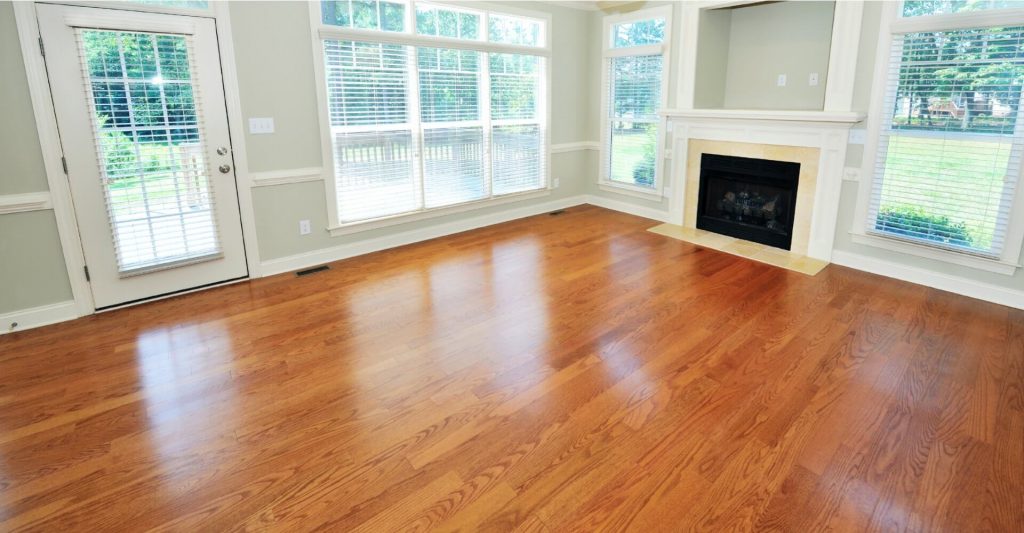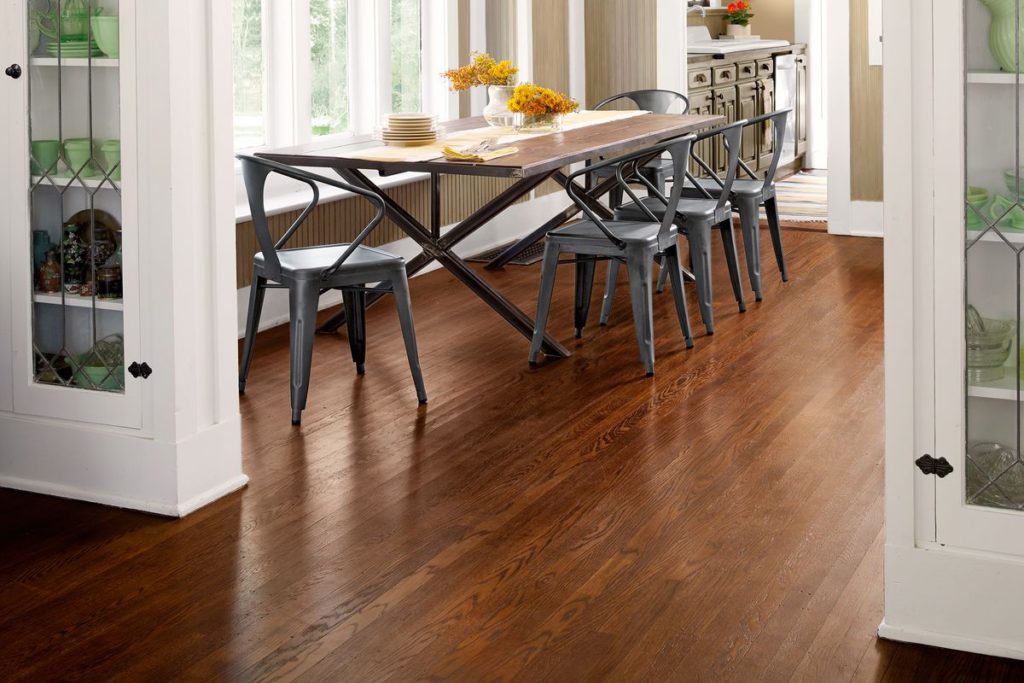This guide walks you through each step of the process – from determining whether refinishing your hardwood floors is your best option, all the way up to adding that final coat of finishing products. Below, we outline the steps that your professional will take in restoring your floor to its pristine, shining condition.
Your flooring professional will begin by sanding down any previous finishes on the floor, as well as fixing any damaged areas. Sanding is then intended to be used for the restoration of floors that are heavily scraped or that have not been finished for a number of years.
Next, your contractor will use a large sanding machine to smooth out the upper layers from the floor, readying it for the finish. You will use the power buffer to smooth your floor, and then a new finish will be applied. If scratches are not going through all the way into the wood, you may want to use the buffer to lightly sand my oak floors, then apply a fresh coat or two of finish.
Remember to sand your wood floors evenly across the room that you are sanding, you do not want to begin applying a finish layer to your wood floors, only to find one area that was not properly sanded. If your wood floor does not have any finish applied at this point, you will still have to sand it to ensure that the bond is fully formed, you cannot just slather the finishing product down. If it still has a large portion of the finish, only some minor, low-impact scratches (that will not penetrate through all of the layers), you may want to coat it again rather than refinish.
While a real wooden floor may have been refinished multiple times, engineered floors may have survived a single refinishing. Before a floor can be refinished, don’t forget to use timber floor cleaner to make sure your floor clean.

When you are grinding, it is crucial that you attend to every single inch of the flooring; even up to the walls, to provide a consistent finish when refinishing is completed. At the start of intermediate sanding, there is no longer an older finish on the floor, and you are only looking to make the wood smoother. When you are done with the second sanding step, your floor should feel like brand new wood.
Once you have stripped your floor and finished it, it is time to apply your chosen stain. Sanding the floor is one of the most crucial steps in hardwood flooring restoration, as it takes away any previous stains and turns the whole floor into a clean slate. Refinishing hardwood floors is the process of removing existing layers of finishing products (which is typically done using a sanding tool to get to bare wood) and then applying timberfloor polish to protect and make them look like new.
To fully refinish hardwood floors-which involves sanding the top layer all the way down to bare wood, and then applying multiple coats of new finishing such as polyurethane-costs between $1.50 to $4 per square foot. Typically, a professional contractor will charge $3 to $4 per square foot for prep, sanding, and the other steps needed to finish hardwood floors. For custom refinishing jobs that include hardwood flooring grinding, staining, or applying a water-based finish, you can expect to be quoted between $3.75 and $5 per square foot. If you are doing refinishing yourself, expect prep work like fixing a few nicks, and the actual process of staining and refinishing the hardwood floors, to be around four working days and around $700.
The hardwood refinishing process is easier and less costly than grinding the floor to bare wood, and it takes less time. Refinishing involves sanding the top layer of wood, then reinforcing it and sealing so that you will be enjoying many more years of your favorite floor.
It is certainly possible to refinish engineered hardwood floors once or twice, but you have to be sure the real hardwood layer is thick enough that it will be possible to sand it without reaching into the plywood. If blobs of drips penetrate into the wood, the seal has worn away and you will have to refinish the floor.
Otherwise, a new layer of finish does not adhere to the floor correctly, which could result in staining, marks, and irregular layers. Harsh chemicals will harm your floors finish and floorboards, soaps will leave a residue, and too much water can swell wood. Incorrectly sanding and sealing hardwoods will lead to damaged floors over the course of a floors lifespan.
If you have a slightly worn but otherwise in great shape floor, you may get away with simply recoating your flooring with no sanding. If you are a woodworker, you may be surprised how sanding floors does not involve as fine an abrasive material as what you might use in furniture construction. Anyone can power up a floor sander that will strip away a floors top layer, but only a skilled finisher will control the sanding process so that a smooth, uniform finish is created.
Smooth finished hardwood floors can be refinished as many as five, if not six times, although daily traffic and wear on hardwood floors in most homes will not need that level of upkeep. Refinishing is needed if you have scratches, marks, indented furniture, lack of luster, or staining. Contractors will sweep and dry the floor, paying particular attention to any nails or other objects sticking out and potentially impeding the refinishing process.
